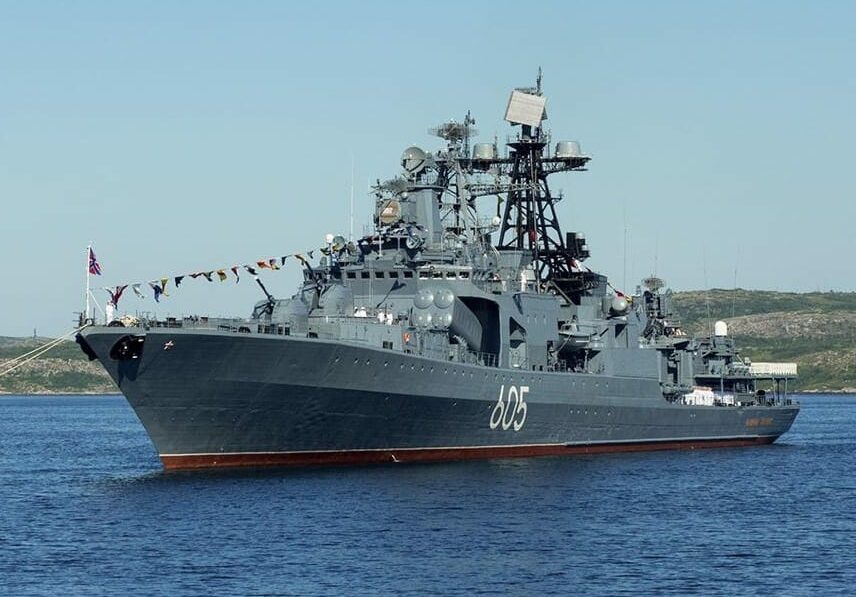Revival of the container shipping market in Ukraine

This year was successful for the ports of Ukraine not only due to the achievement of the pre-war level of exports, but also from the perspective of the prospects opened up thanks to the recovery of container transportation. At the same time, these processes are not as easy and fast as it might seem at first glance.
Ukrainian Shipping Magazine analyzed why it is important for Ukraine to resume container transportation, whether large container ships will enter the ports again, as well as whether it is worth waiting for the return of major market players.
The war and its impact on container shipping
Before the beginning of the full-scale war, the market of container transportation in Ukraine did not occupy a leading position, if compared with bulk carriers. Thus, in 2021, sea ports handled 12 million tons of container cargo. According to the USPA, container processing then amounted to 1 million 21 thousand TEU.
In particular, 671.5 thousand TEU were transshipped in the Odesa port, 238.6 thousand TEU in the Pivdennyi port, and 112.2 thousand TEU in the Chornomorsk port.
Such indicators were caused by the pandemic, due to which large world ports were closed, which in turn affected Ukrainian terminals. A separate problem before the war was the shortage of containers, which led to an increase in the cost of transportation and freight rates.
Since the beginning of the full-scale war, due to the blockade of ports and the occupation of territories, container terminals in Ukraine have suspended their activities or have been reformatted as export terminals for other types of cargo.
Only two years later, in March 2024, the Ministry of Infrastructure reported that Ukraine plans to resume sea container transportation. Then it was about a period of about a month.
“I hope that in two or three weeks we will receive the first measures,” Deputy Minister Yurii Vaskov said at that time.
The ministry added that all five container terminals are ready to handle containers. Almost all of them were previously involved in transshipment of agricultural and other products.
The first moves from a dead point
At the beginning of April, two feeder container ships of the Ukrainian company — T Mare and T Moon — were put into operation on the line connecting Chornomorsk with the Turkish port of Yalova and Romanian Constanta.
So, on April 3, it was T Mare under the flag of Panama that became the first vessel with containers to enter the port of Odesa region since the beginning of the war. It is worth noting that we are talking only about the feeder transportation of containers to a foreign hub, where they were already loaded onto ocean container carriers of international lines.
Also, on April 21, the container ship Pros Hope entered the port of Chornomorsk and docked at the berth of one of the terminals. According to Marine Traffic, the container ship made a direct flight from Zhuhai, China.
Return of big players and big ships to Ukraine
At the end of May, it became known that the Maersk company is launching the first container service to the ports of Great Odesa since the beginning of the full-scale war.
It is important to add that Maersk, in cooperation with the Ukrainian feeder operator Iteris, uses a vessel with a capacity of 1100+ TEU. We are talking about connecting the port of Chornomorsk with the Romanian container terminal, which is located in the port of Constanta.
At the same time, the media space was shaken by another positive news – the Hapag-Lloyd company resumes transportation to and from Ukrainian ports.
According to Dmytro Kazanin, the director and owner of the transport and logistics company TEUS, in general, the service of container transportation is in great demand. That is why more and more lines are opening direct service to Ukraine.
“Everyone wants to drive to us, besides, this option significantly reduces the burden of truck delivery. Container shipping by sea has many advantages – especially when it comes to large volumes of products. It is obvious that the mentioned companies feel the economic expediency of their decision. Therefore, for Ukraine, this is a positive “bell” for the revitalization of the entire transportation sector,” Dmytro Kazanin believes.
In turn, the cost of container transportation insurance has remained approximately the same in recent years.
“The only thing that is generally unclear is the answer to the question of whether containers are insured during parking at the terminal in the port. Cargo is definitely not insured unless the customer insures it. And what about equipment insurance is unclear. It turns out that the container lines for some reason keep this story quiet,” the expert notes.
The return of large container ships to the ports of Odesa should not be expected until the end of the war. The key reasons are military risks, as well as the involvement of a large fleet in other directions.
“First of all, the service in the Black Sea, especially in a remote area like ours, is not interesting for the lines. This is a dead-end branch, and the insufficiency of a large fleet is also indicated. So they try as much as possible to attract him on the main routes. In any case, small vessels will go here. In the best case, we are talking about the transportation of cargo with transshipment in the Mediterranean or Turkey,” adds the director of TEUS.
According to him, there is also the option of third-party companies that will provide fleets to large container lines. The only exception is Akkon Lines, which went to Ishmael during the full-scale war.
“Today, it works with Rybnyi Port. But the port is small, and they make their own decisions about this service there. Thus, there is no reason to expect the return of large container ships to Ukrainian ports in the near future. But small vessels also play an important role in the functioning of the logistics industry in Ukraine,” said Dmytro Kazanin.
Features of logistics
According to the expert, the topic of container transportation should be considered from the point of view of the peculiarities of logistics. In particular, we are talking about the factors of transit time and cost.
“It is important to address the issue of the conditions under which the resumption of transportation will become not only real, but also as effective as possible. Transshipment should not take place in Romania, but starting from Turkey. Such a feature of transshipment will provide an opportunity to obtain sufficient transit time and make the cost clear. If we compare, now cargo is delivered by sea first to the Romanian port of Constanta, and then to Odesa. It doesn’t make economic sense. If we take into account the price factor, then the resumption of container transportation from the ports of Odesa region is a desirable and interesting prospect for everyone,” emphasizes Dmytro Kazanin.
At the same time, the question arises regarding the insurance of both the containers and what is inside them.
“This is related to the factor of cargo being at the terminal, which carries a number of threats in connection with regular shelling of ports. Therefore, the question arises as to who will be entrusted with the responsibility of compensating the value of the cargo in case it is damaged as a result of the shelling”, – summarizes the director of the logistics company.
First results and forecasts
At the end of May, it became known that since the beginning of the year, 10 container ships have left the port of Chornomorsk.
At that time, USPA head Yuriy Lytvyn noted that this trend will continue.
“With the dynamics that we see now, 2024 will definitely be a record year of all the war years and will reach the average pre-war level. It will be more than 100 million tons per year with a favorable security situation,” said Lytvyn.
It is likely that large container companies will be the first to resume their work in the ports of Ukraine. For example, it was recently reported that the Swiss MSC plans to restore a regular feeder service to the ports of Great Odesa in June 2024.





